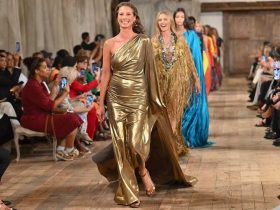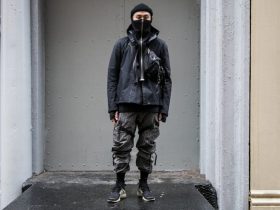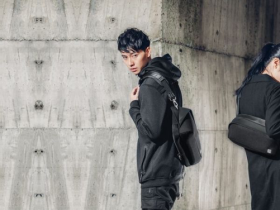In recent years, the fashion industry has undergone a transformative shift, embracing a more inclusive approach that prioritizes accessibility for all individuals. As designers and brands recognize the importance of creating garments that cater too diverse needs,we’re witnessing the emergence of innovative solutions that bridge the gap between style and functionality.
In this article, we will explore the dynamic intersection of fashion and accessibility, highlighting how this new era of design is not only reshaping the way we think about clothing but also empowering individuals with disabilities to express themselves through personal style. Join us as we delve into inspiring stories, groundbreaking initiatives, and the creative minds driving this meaningful change in the world of fashion.
Exploring Inclusive Fashion: Understanding the Needs of All Body Types

In the realm of fashion, the concept of inclusivity is gaining momentum, paving the way for garments that cater to a diverse array of body types. Designers are beginning to recognize the importance of offering a broad size range and styles that reflect the uniqueness of every individual. This shift is not merely about making larger sizes available; it’s about redefining beauty standards and celebrating diversity through thoughtful design.Key considerations in this movement include:
- Adaptive Clothing: Designs that accommodate specific physical needs, whether it be through easy closures, adjustable fittings, or sensory-amiable fabrics.
- Versatile Sizing: Garments that can fit multiple body shapes and sizes, allowing for a more personal and comfortable fit.
- Body Positivity: Embracing the idea that all body types deserve stylish options,encouraging self-expression and confidence.
As fashion becomes increasingly accessible, it is crucial for designers to engage with consumers to truly understand their needs and desires. A collaborative approach can lead to innovation in materials, cuts, and styles tailored for everyone. By prioritizing inclusivity,brands not only enhance their market reach but also foster a community where everyone feels valued. This conversion can be illustrated by a simple comparison of traditional versus inclusive design approaches:
| Traditional Fashion Approach | inclusive Fashion Approach |
|---|---|
| Limited size offerings | Extensive size ranges |
| Focus on trends | Focus on versatility and comfort |
| Static designs | dynamic, adjustable designs |
Innovative Materials and Technologies: Crafting Stylish and Functional Designs
in the world of fashion, the convergence of style and practicality has ignited a spark of innovation, leading designers to explore materials and technologies that are both chic and functional. New advancements have paved the way for clothing that not only makes a statement but also caters to the needs of diverse individuals. As a notable example,fabrics embedded with smart technology can adapt to environmental conditions,ensuring comfort regardless of the weather. Additionally, the integration of enduring materials like recycled polyester or organic cotton into modern fashion promotes not only eco-friendliness but also durability, enhancing the overall value of clothing.
Moreover, fashion brands are reimagining their approaches by incorporating inclusive design principles that focus on accessibility. Innovative closures, adjustable fits, and magnetic buttons are just a few examples of how designers are making clothing easier to wear for people with varying abilities. these advancements extend beyond mere aesthetics, focusing on functionality that empowers individuals. Here are some key innovations in this space:
- Adaptive Clothing: Designed with ease-of-use in mind.
- Wearable Tech: Integrates fitness and health monitoring directly into garments.
- 3D Printing: Allows for custom designs tailored to individual needs and preferences.
- Eco-Friendly Materials: Reduces environmental impact while ensuring comfort and durability.
Empowering Designers: Building Awareness for Accessible Fashion Practices
As the fashion industry evolves, designers play a crucial role in integrating accessibility into their work. By adopting inclusive practices, they can ensure that their creations meet the needs of all individuals, regardless of their abilities. This shift towards accessible fashion emphasizes the importance of considering varied body types and functional needs, thereby fostering a more diverse and inclusive approach to design. Designers are encouraged to engage with community members to better understand the challenges they face, allowing them to create garments that not only look good but also enhance the user experience.
To build awareness and drive change, designers can focus on several core principles that champion accessibility:
- Research & Collaboration: Partner with organizations that support individuals with disabilities to gain insights on their specific needs.
- Versatile Materials: Utilize fabrics that are comfortable, adaptive, and easy to wear, catering to a wide range of sensory preferences.
- Functional design Features: Implement elements like adjustable closures, magnetic buttons, and tagless labels to enhance usability.
| Design Principle | Description |
|---|---|
| Universal Design | Creating products that are usable by people of all abilities. |
| Sustainability | Using eco-friendly materials that are also accessible. |
| Community Feedback | Incorporating insights from diverse user perspectives into the design process. |
Consumer Choices Matter: How Shopping Mindfully Can Drive Change
In a world where the fashion industry often prioritizes trends over sustainability and inclusivity, consumers hold the power to influence change through their purchasing decisions. By choosing brands that prioritize ethical practices, sustainability, and accessibility, shoppers can significantly impact the market landscape. Every decision made in the retail space—from selecting a clothing item to supporting a local artisan—echoes through the entire supply chain, making it vital for consumers to consider the values behind the products they buy. By advocating for brands that align with their ethical beliefs, consumers can foster a culture of duty in the fashion sector.
The transition towards a more accessible and thoughtful fashion industry requires the collaboration of both designers and consumers. To facilitate this, shoppers can look for the following attributes when assessing brands:
- Inclusive Sizing: Ensuring that fashion caters to all body types.
- Sustainable Materials: Opting for products made from eco-friendly fabrics.
- Transparent practices: Supporting brands that disclose their manufacturing processes.
- Community Engagement: Choosing companies that invest in their local communities.
As consumers become more aware of the impact of their choices,they not only support brands that are breaking barriers but also encourage others to follow suit.A conscious mindset can lead to a ripple effect, where mindful purchasing transforms the fashion landscape into one that prioritizes accessibility and innovation.
In Summary
as we conclude our exploration of the intersection between fashion and accessibility, it’s clear that we are entering a transformative era of design that prioritizes inclusivity without compromising style. The movement towards accessible fashion is not just about adaptions and modifications; it’s about celebrating diversity and empowering individuals to express themselves through personal style.
Designers, brands, and consumers alike are recognizing the importance of accessibility in fashion, paving the way for innovative solutions that cater to a broader audience. By embracing this forward-thinking approach, we have the opportunity to create a fashion landscape that values functionality, creativity, and individuality.
As we move forward,let’s continue to support and advocate for designs that prioritize accessibility,ensuring that every person can experience the joy of fashion. Together, we can foster an inclusive community that highlights the beauty in our differences and champions a world where everyone’s unique style can shine brightly. Thank you for joining us on this journey—here’s to a future where fashion truly is for everyone!










Leave a Reply